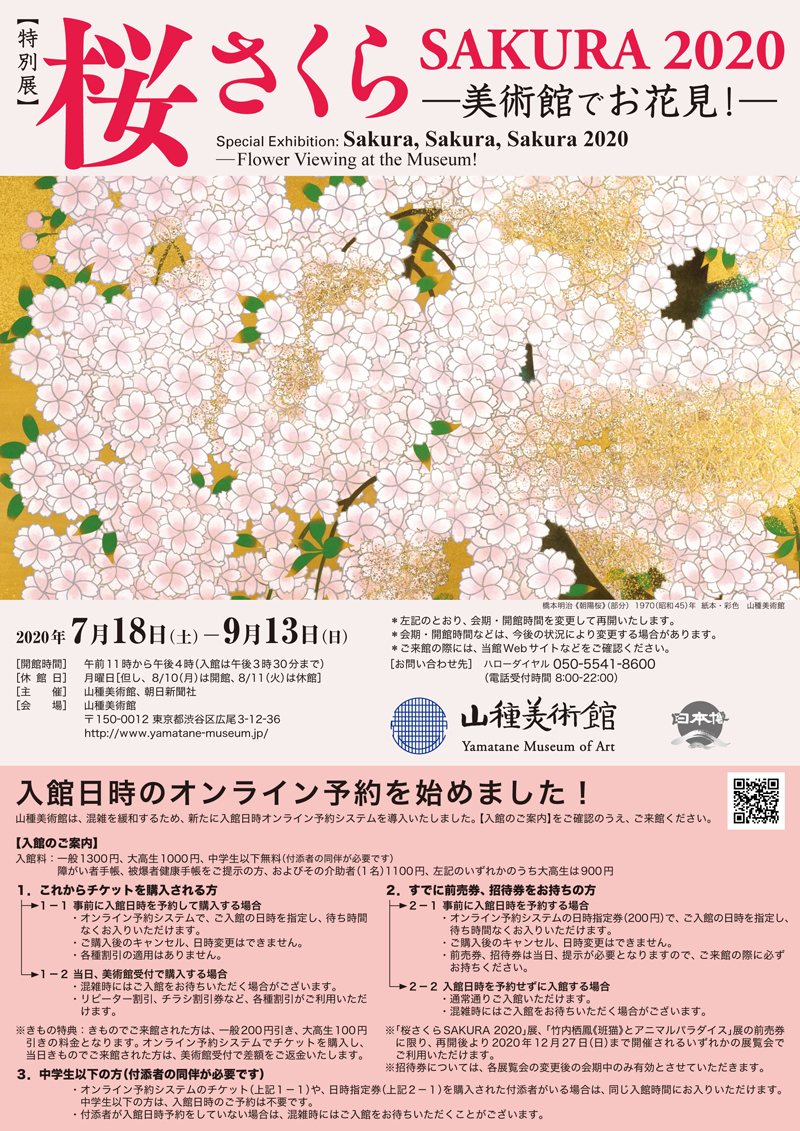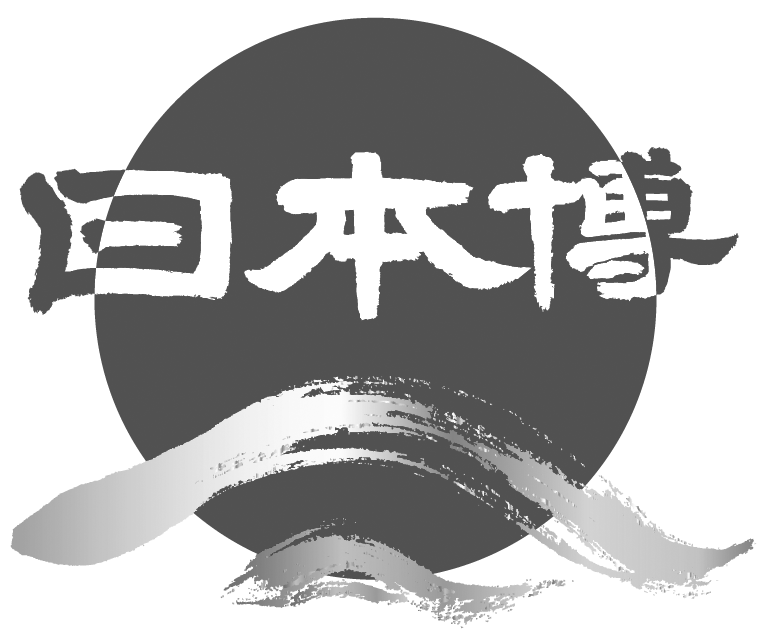Past Exhibition
The Yamatane Museum of Art will reopen the special exhibition
Sakura, Sakura, Sakura 2020 ― Flower Viewing at the Museum on Saturday, July 18.
For the reopening, we will shorten our opening hours and will be using
an online timed-entry reservation system (tickets for specific days and times).
Please check details on our website.
Special Exhibition :
Sakura, Sakura, Sakura 2020
— Flower Viewing at the Museum!

14 March (Sat.) – 10 May (Sun.) 2020
※Dates changed 18 July – 13 September
(Closed on 11 Aug and on Mondays, except for 10 Aug.)
Hours:11 am - 4 pm (Last admission at 3:30 pm)
Admission Fees: Adults: 1,300yen; *university and high school students, middle school and younger children: free of charge (but middle school and younger children must be accompanied by an adult)
Disability ID holders and one person accompanying them: 1,100 yen
*[August 4 to September 13] Admission is free for university and high school students
*Discount for those who are wearing kimono: Discount of 200 yen for adults.
Organized by: Yamatane Museum of Art and Asahi Shimbun.
Approximately 50 works in total are to be displayed.
Exhibition Overview
The Yamatane Museum of Art holds a special exhibition of paintings of cherry blossoms, a beloved symbol of Japan.
Cherry trees have long grown wild in Japan, on its mountains and lowlands. In the middle ages and the early modern period, aristocrats, samurai, and others in the upper reaches of society admired the cherry trees growing by their homes or in famous places. In the Edo period, a great number of new varieties of cherry trees were bred, cherry-blossom viewing became a custom widely observed by the common people, and the Japanese attachment to the cherry blossom grew broader and deeper. The cherry blossom, so beautiful in full bloom and so evanescent, its petals swiftly scattering, has long been celebrated in poetry, incorporated in designs for furnishings and other objects, and depicted in paintings. It has blossomed in the arts in a profusion of ways.
This exhibition, focusing on the cherry blossom, with such deep ties to the Japanese aesthetic, introduces about fifty modern and contemporary Nihonga from our collection. Hishida Shunsō’s Women Viewing Cherry Blossoms depicts ladies gathered beneath the trees in full bloom. Okumura Togyū’s Spring in Yoshino takes Nara’s Mount Yoshino, famous for its cherry trees, as its subject. Hashimoto Meiji’s Cherry Tree in Morning Sun addresses the Miharu Takizakura, a famous thousand-year-old cherry tree in Fukushima. Hashimoto Gahō’s Kojima Takanori, a Heroic Samurai: Scene from the Taiheiki (Chronicle of the Great Peace), depicts the “cherry tree of loyalty” episode in which Takanori rips bark off a cherry tree to write on it a poem of loyalty to the deposed emperor. Famous places, manners and customs, grand narratives: cherry trees play leading roles in works on scores of themes.
Paintings of cherry trees are in full bloom in our museum. We hope you will enjoy the many portraits of the cherry tree that modern and contemporary Nihonga artists have created.
*All works mentioned are from the Yamatane Museum of Art collection.
 Hashimoto Gahō, Kojima Takanori |
 Hishida Shunsō, Women Viewing Cherry Blossoms |
 Matsuoka Eikyū, Court Ladies in Spring Clothing, in the Spring Sunlight |
 Kobayashi Kokei, Cherry Blossoms |
 Yokoyama Taikan, Mountain Cherry Trees |
 Tsuchida Bakusen, Oharame, Women Peddlers |
All works are the property of the Yamatane Museum of Art






